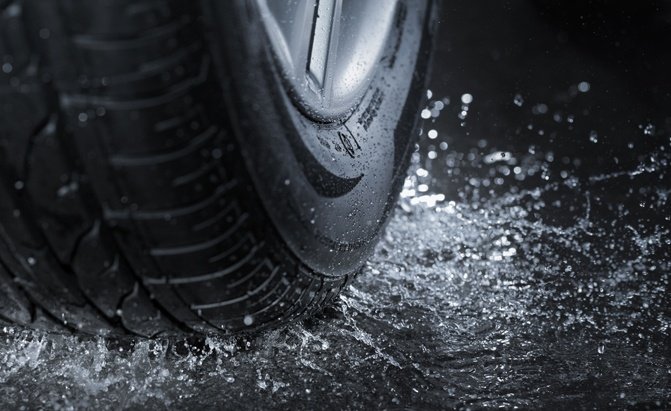While driving, it is often left out of one’s thoughts that the only things giving you any turning ability and acceleration and braking are four small patches of vulcanized rubber that are in contact with the pavement beneath you. Yet, these four contact patches are quite literally what you are staking your life on. Traction, or the ability of these four contact patches to grip against the pavement, plays a huge role in controlling your vehicle.
There are many different types of tires out there. Racing cars on specialized tracks will use slick tires, with no grooves, to maximize their contact with the tarmac. On the road, you can get everything from “summer tires,” which are more rationally semi-slicks with some water displacing grooves, to full all-season tires, to off-road and mud/snow specialized tires.
What is important is that you know where you drive as well as you can, and make an informed decision on the best tires you can get.
How Rain Reduces Traction
You’ll have to pardon us, we’re going to do a little science talk here. A tire grips the road due to three specific forces acting upon it.
The first is gravity, which pulls the weight of the car down, through the suspension, into the tire. This is combated via pressurized air preventing the tire from literally being flattened by the weight. In terms of physics, at a full stop, this balance of air pressure resisting the weight of the car is called “normal force,” or more properly the overall weight the object is exerting on the ground, and is expressed as N in formulas.
The second force is inertia. When a tire spins, inertia acts upon the tread of the tire, increasing the diameter of the tire slightly. This inertia also transfers its force into the ground, pushing against the pavement that wants to resist it, and moving the car forward. This can be seen in quite dramatic fashion if you look at the rear tires of a top-fuel dragster.
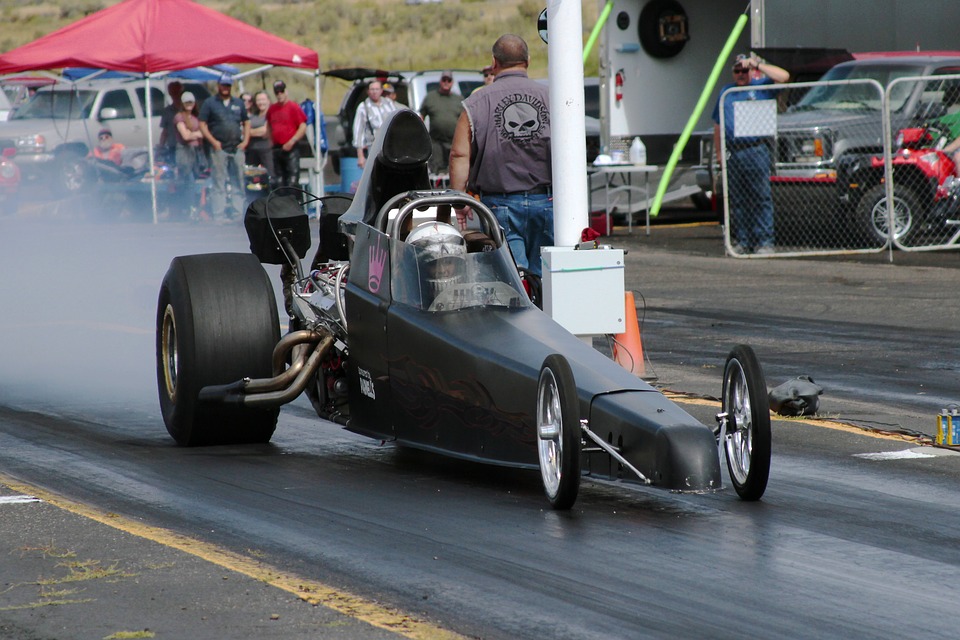
These tires are normally quite squat, with extremely flexible sidewalls. When the driver lets all the power of the engine out through them, they expand their diameter to almost double the diameter while at rest, and become as narrow as the compound of the rubber allows, literally “Standing up” the tire so it gets maximum grip and acceleration.
The third force acting on the tire is friction, which is roughly the amount of resisting force a surface has, expressed in physics as “f.” This friction is what causes you to scrape your palm if you trip and fall on the sidewalk vs no scrapes on your palm if you trip and fall while skating on ice. Ice, by definition, has a much smoother surface than pavement, and doesn’t act as quickly on your skin.
There is an important equation that determines that, known as the coefficient of friction, expressed in physics as “µ.” This equation takes the normal force acting upon an object, and the friction of the surface it is pushing against, and comes up with a number between 0 and 1 that expresses that coefficient. General use pavement, for example, in a dry and clean condition, often is rated as having a coefficient of friction of around 0.7, which is quite grippy. Teflon, on the other hand, has the lowest coefficient of friction of any man-made substance at 0.05.
This is expressed in the formula: = fN
This diagram also expresses how all these forces interact:
With the understanding of these forces, namely normal force, rotational inertia, and friction and the relationship between the normal force and friction expressed as the coefficient of friction, we can finally start to delve into just how rain reduces traction.
Rain & Tires
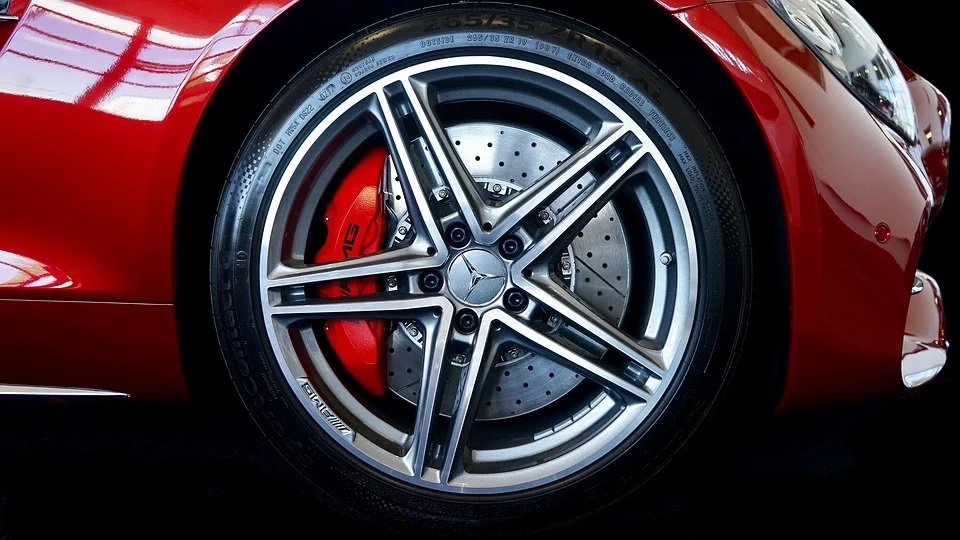
On dry pavement, with a normal coefficient of friction of 0.7, your tires stick well to the road because the maximum amount of normal force, inertia, and friction are allowed to exist between all parts of the tire. However, when it rains, something happens to these forces.
Water, in sufficient amounts, acts as a lubricant. Effectively, what happens between the normal force and friction is that a new surface is introduced between the tire and the pavement. This new layer has a very low coefficient of friction, and while thin enough that the normal force can push down through it in a few milliseconds, it introduces enough of a lubricating force that the coefficient of friction drops.
This drop can be affected by the volume of rain falling and the amount of standing water on the pavement. Often, a heavy rain can drop the coefficient of friction to 0.4, or almost half of what it normally is on dry pavement.
The most dangerous situation is where there is enough standing water at enough of a depth to cause your tire to completely lose contact with the pavement, immediately dropping the coefficient of friction to 0.0. This is also known in general parlance as hydroplaning.
Tire Grooves & What They Do
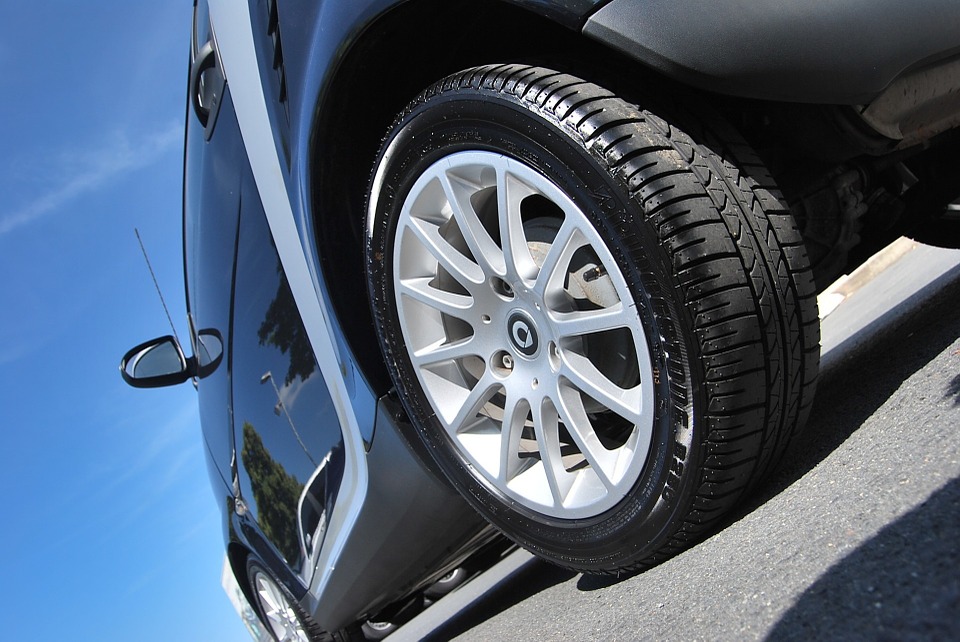
If you went out to your car right now, you will see that your tires have two or three major grooves in the middle or offset to the interior side of the tire. You will also see multiple angular groves that almost make an arrow shape leading towards those central grooves. These are called, respectively, water displacement grooves and tire sipes.
What the central grooves do is quite literally in the name. With water on the road, these grooves are there for the water being acted upon by the normal force of the tire to have somewhere to go, or, in more scientific wording, they allow for the water under the tire to be displaced into an empty volume.
Sipes, on the other hand, are very interesting. There two types of sipes, known as hard sipes, or the grooves that are cut into the tire that are large enough to put your little finger into, and soft sipes, which you will see if you run your finger over a section of a mud & snow tire and see little gaps appear in the solid part of the tread.
These sipes are shaped so that the moment the leading edge of the tire contacts water, it first displaces that water into the groove of the sipe, and then, using rotational inertia, fling it towards the outer or inner edge of the tire until it departs from under the tread. Soft sipes can help by allowing the tread in contact with the pavement a little extra grip without needing to displace water.
Why You Need Good Quality Tires in Good Condition
With the sciency bit out of the way, let us now focus on what actually happens in the real world. Scott Kirk, auto accident lawyer at Brett McCandlis Brown & Conner, says that many of his clients are surprised by how little traction they have when they drive in the rain. This can be contributed to by a number of factors, the least of which is an important part of your tire, the tread depth.
Tires have a certain tread depth that, once reached, means the tire must be replaced. In the USA, this is federally mandated as being 2/32 of an inch, or 1.6mm if expressed in metric. Any tread that is lower than this is technically an illegal tire and can end up with you being fined for having it on your vehicle.
But the far more serious implication is that in rainfall, you will not have enough water displacement to effectively gain traction against the pavement. This, in the worst case scenario, means that you will not have any friction to work against your tires while braking, and even with ABS, you could lock your wheels and hydroplane into another car.
Another consideration regarding tires is that they need to be in good condition. Tires do have specific life cycles, even if they are not at the minimum tread depth. Things to watch out for here are sidewall rot, tread rot, and small bubbles appearing in the sidewall of your tire. If you see any or all of the three, your tires need to be replaced.
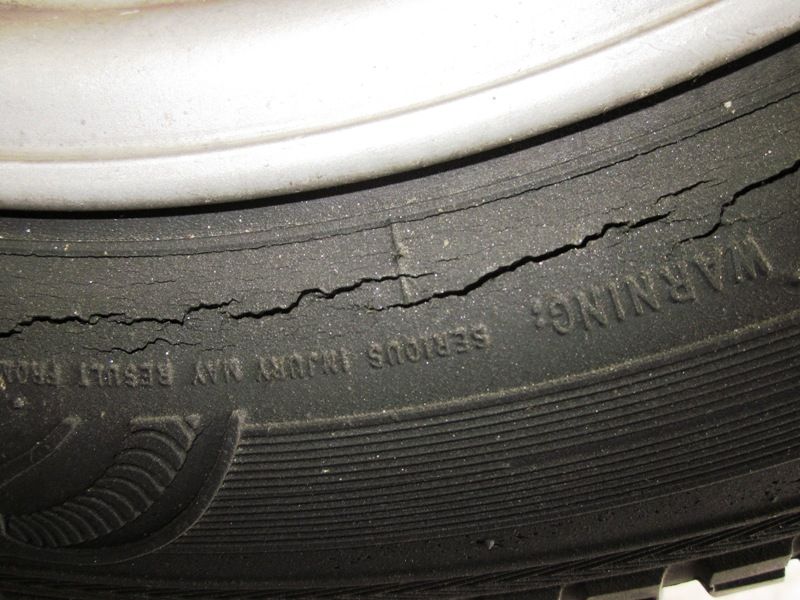
Something that helps massively in traction and keeping your tires healthy in the long run is something that also helps fuel efficiency and is the most often overlooked part of the tire. This is, surprisingly, correct tire inflation. Your tires should realistically be checked weekly for correct pressures, and air added or bled off to make sure that your tire is precisely on the recommended inflation in your vehicles owners manual and on the driver’s side car information sticker.
By following these simple steps, as well as leaving a little more space between vehicles in the rain, you can maximize your traction in the wet. But keep in mind, no matter what you do, physics can’t be beaten with happy thoughts. Leave space, brake progressively, accelerate progressively, and take corners at reasonable speeds, and you should be fine!


